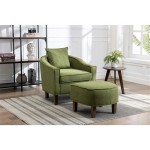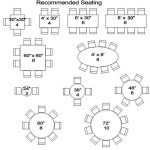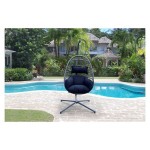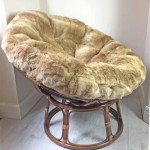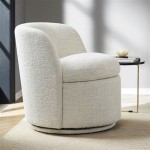```html
Mid-Century Oak Dining Chairs: A Timeless Blend of Style and Durability
Mid-century oak dining chairs represent a significant and enduring design trend, characterized by clean lines, functional forms, and the warm, natural beauty of oak wood. This style, originating in the post-World War II era, prioritizes simplicity and practicality, making these chairs a versatile addition to a wide range of dining spaces. Their enduring popularity stems from their ability to seamlessly blend with both vintage and contemporary décor, offering a timeless appeal that transcends fleeting trends.
The defining characteristics of mid-century oak dining chairs include their minimalist aesthetic. Often, these chairs feature smooth, sculpted lines, tapered legs, and unadorned surfaces. The absence of excessive ornamentation allows the natural grain and hue of the oak to take center stage. This emphasis on natural materials and unpretentious design aligns with the core principles of mid-century modernism, which sought to create furniture that was both aesthetically pleasing and highly functional. The choice of oak as the primary material contributes significantly to both the aesthetic and the durability of these chairs.
Oak, a hardwood known for its strength and durability, is an ideal choice for furniture that is intended for frequent use. Its inherent density makes it resistant to scratches, dents, and other forms of wear and tear, ensuring that these chairs can withstand the rigors of daily life. Furthermore, oak possesses a distinctive grain pattern that adds character and visual interest to the furniture. Depending on the specific species of oak used and the finishing techniques employed, mid-century oak dining chairs can exhibit a range of colors, from light honey tones to rich, deep browns. This versatility allows them to complement a wide variety of dining tables and interior design schemes.
Key Point 1: The Design Principles of Mid-Century Modernism
Understanding the core principles of mid-century modernism is crucial to appreciating the aesthetic of mid-century oak dining chairs. The movement emerged as a reaction against the ornate and heavily decorated styles of previous eras. Designers sought to create furniture that was simple, functional, and accessible to a wider audience. This involved a focus on clean lines, geometric shapes, and the use of natural materials. The emphasis was on eliminating unnecessary embellishments and creating furniture that served a specific purpose without sacrificing aesthetic appeal.
One of the defining characteristics of mid-century modernism is its emphasis on functionality. Furniture was designed to be comfortable and practical, with a focus on ergonomics and ease of use. This is evident in the design of mid-century oak dining chairs, which often feature contoured seats and supportive backrests that are designed to provide comfort during extended meals. The tapered legs, a common feature of mid-century furniture, not only contribute to the chair's visual appeal but also provide structural stability.
The use of natural materials was another key principle of mid-century modernism. Designers sought to celebrate the inherent beauty of wood, metal, and other natural elements. Oak, with its warm color and distinctive grain pattern, was a popular choice for furniture construction. The natural qualities of the material were often emphasized through the use of clear finishes or minimal staining, allowing the beauty of the wood to shine through. This emphasis on natural materials helped to create furniture that felt both organic and sophisticated.
The influence of Scandinavian design is also evident in many mid-century oak dining chairs. Scandinavian designers were known for their use of light-colored woods, simple forms, and a focus on craftsmanship. Many mid-century chairs incorporate elements of Scandinavian design, such as gently curved backrests and subtly angled legs. This influence contributes to the overall sense of elegance and refinement that characterizes these chairs.
Key Point 2: Identifying Authentic Mid-Century Oak Dining Chairs
While many contemporary dining chairs draw inspiration from mid-century modern design, discerning authentic mid-century pieces requires careful observation. Several factors can help distinguish genuine mid-century oak dining chairs from reproductions or later interpretations.
Firstly, the wood itself is a significant indicator. Authentic mid-century chairs typically utilize solid oak, which exhibits a consistent grain pattern and substantial weight. Veneered oak, while sometimes used, is less common in high-quality mid-century pieces. Look for signs of age, such as subtle variations in the wood's color or the presence of a natural patina. Carefully examine the joints for evidence of traditional woodworking techniques, such as mortise-and-tenon joints or dovetail joints, which were commonly used in mid-century furniture construction.
Secondly, the design details can provide clues to the chair's age and authenticity. Pay attention to the shape of the legs, the contour of the seat, and the overall proportions of the chair. Mid-century chairs often feature tapered legs that are angled outward, creating a sense of lightness and stability. The seat may be slightly curved or sculpted to provide added comfort. Examine the hardware, such as screws and bolts, for signs of age or wear. Original hardware may have a slightly oxidized appearance or exhibit subtle variations in color and finish.
Thirdly, checking for markings or labels can be immensely valuable. Many mid-century furniture manufacturers stamped their pieces with a logo or a model number. These markings can often be found on the underside of the chair or on the back of the seat. Research the manufacturer's mark online to verify its authenticity and to learn more about the chair's history. However, keep in mind that not all mid-century chairs were marked, so the absence of a label does not necessarily indicate that the chair is not authentic.
Finally, consider the overall condition of the chair. While some wear and tear is to be expected in vintage furniture, excessive damage or poorly executed repairs can detract from its value and authenticity. Look for signs of significant damage, such as cracks in the wood, loose joints, or replaced upholstery. If the chair has been refinished, ensure that the finish is appropriate for the period and that it does not obscure the natural grain of the oak.
Key Point 3: Integrating Mid-Century Oak Dining Chairs into Modern Interiors
The enduring appeal of mid-century oak dining chairs lies in their ability to complement a wide range of interior design styles. Their simple, elegant forms and the warmth of oak wood make them a versatile addition to both traditional and contemporary spaces. When incorporating these chairs into a modern interior, several factors should be considered to ensure a cohesive and harmonious look.
One approach is to pair mid-century oak dining chairs with a modern dining table made from a contrasting material, such as glass, metal, or concrete. This juxtaposition of materials creates visual interest and prevents the dining area from feeling too homogenous. For example, a set of oak chairs with a light finish can be paired with a glass-topped table with chrome legs, creating a sleek and sophisticated look. Alternatively, darker oak chairs can be paired with a concrete table for a more industrial aesthetic. The key is to choose materials that complement each other in terms of color, texture, and overall style.
Another approach is to use mid-century oak dining chairs as accent pieces in a room with a predominantly modern aesthetic. A single oak chair can be placed in a corner to create a cozy reading nook, or a pair of chairs can be used as occasional seating in a living room or bedroom. In this context, the chairs serve as a subtle nod to mid-century design, adding a touch of warmth and character to the space without overwhelming the overall aesthetic. When using chairs as accent pieces, consider choosing chairs with interesting details, such as a unique backrest design or an unusual wood finish.
When incorporating mid-century oak dining chairs into a modern dining room, consider the overall color palette of the space. Oak wood is a natural material that can be easily integrated into a variety of color schemes. Lighter oak chairs can be paired with pastel colors or muted tones to create a soft and inviting atmosphere. Darker oak chairs can be paired with bold colors or contrasting neutrals to create a more dramatic and sophisticated look. Consider using textiles, such as rugs, curtains, and tablecloths, to tie the chairs into the overall color scheme of the room.
Finally, consider the scale and proportion of the chairs in relation to the surrounding furniture and the size of the room. Mid-century oak dining chairs are typically smaller and more streamlined than traditional dining chairs, making them a good choice for smaller dining spaces. However, if the chairs are too small in relation to the dining table or the overall size of the room, they may appear insignificant. Conversely, if the chairs are too large, they may overwhelm the space. Carefully consider the dimensions of the chairs and the surrounding furniture to ensure a balanced and harmonious look.
```
Mid Century Oak High Back Dining Chairs 1960s Set Of 4 For Sale At Pamono

Autumn Lounge Ch2412 Custom Solid Wood American Oak Dining Chair M Picket Rail Sofas Furniture

Autumn Lounge Ch2412 Custom Solid Wood American Oak Dining Chair M Picket Rail Sofas Furniture

Wooden Dining Chairs In Singapore Comfy

Uform Dining Chair Ch4058 Custom Solid Wood American Oak Ch Picket Rail Sofas Furniture

Mid Century Oak High Back Dining Chairs 1960s Set Of 4 For Sale At Pamono

Oak Modern Spindle Leg Dining Table Only Or As A Set With 4 6 Chairs

Gdf Studio Francaise Indoor Mid Century Modern Natural Oak Dining Chairs Set Of 2

Wholesale Dining Chairs Room Furniture

Mid Century Oak Finish 5 Piece Dining Set Nh010003 Noblehousefurniture

